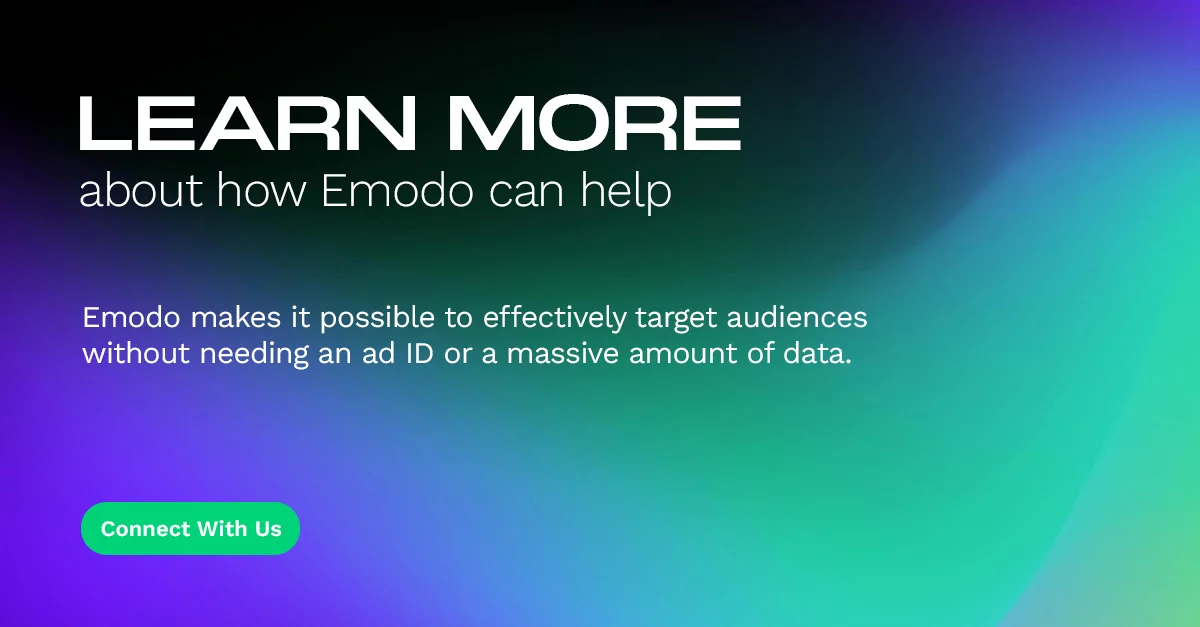An identifier for advertisers (IDFA) was once a powerful tool for targeting audiences and getting your ads in front of the right people. Today, consumers want more privacy and less mobile tracking. As technology companies shift away from default tracking settings and are now prompting their users for consent before letting advertisers access their data, the industry must make significant shifts.
Explore what device ID deprecation means and the advertising tactics that can help you combat the ongoing changes.
What is IDFA deprecation and what does it mean?
An IDFA, also called advertising ID or device ID, lets advertisers track users’ behavior on different applications, similar to how a browser utilizes third-party cookies across websites.
Device IDs once played a key role in personalizing and targeting mobile ads for advertisers. However, digital privacy is becoming increasingly important and valuable to consumers. Over the past few years, the usefulness of IDFA began to decline rapidly after Apple rolled out major privacy changes with the development of iOS 14 in 2021. Instead of having tracking features turned on by default, Apple users now had the choice to decline being tracked.
IDFA deprecation is transforming the way mobile ads work. Without device IDs, following audience behavior becomes more challenging. Advertisers have to find new tactics for getting their ads in front of their target audiences while respecting their private data.
How to adapt to new advertising techniques after IDFA changes
Explore all the ways you can pivot from IDFA-centric advertising strategies and adapt using other techniques.
1. Cohorts
A cohort refers to a group of consumers who share a defining characteristic or common criteria. These groupings make it possible to compare and analyze certain clusters of a target audience.
Some examples of advertising cohorts include the following:
- Users who made a purchase on a brand’s site on a specific date
- Users in the same geographic location
- Users who downloaded an app in the same period
Cohort-based advertising is effective because it utilizes an understanding of the consumer’s interests and attributes. Businesses can use the information they gather from cohort analysis to answer important questions about the audience and their attitudes.
Emodo Audiences can support your advertising efforts through the following cohort targeting techniques:
- Geo-contextual: Using data and insights to target audiences based on location.
- Demographic: Reaching potential customers according to their unique characteristics like gender or age range.
- Interest-based: Serving content to users that align with their existing interests.
2. Contextual targeting
Contextual targeting is an effective strategy that involves placing ads on mobile platforms featuring content relevant to what the advertisement is selling.
One of the reasons this approach helps adapt to a more private digital landscape is that it works across multiple media types without users giving their consent.
You identify contextual audiences according to the subjects they consume rather than the user itself. IDFA changes have led to innovative machine learning and data processing capabilities that let advertisers determine audiences in real-time.
While Emodo does not leverage contextual targeting, Emodo Adapt allows advertisers to create a seamless, non-disruptive ad experience for consumers with ads placed contextually on web pages.
3. First-party data
First-party data refers to customer information that a company collects and owns. This technique lets you identify users without insights from third-party cookies or mobile advertising identifiers (MAID).
First-party data encompasses information about your customer base, such as:
- Purchase histories
- System preferences
- Loyalty status
- Behavior and interactions
Businesses can utilize this type of data to craft meaningful advertising content that caters to their target audience.
Some of the greatest benefits of using first-party data to inform your advertising campaigns include:
- Greater transparency
- More personalization
- Enhanced customer relationships
- Privacy law compliance
While first-party data can be challenging to scale on its own, you can leverage it with other data to improve scalability.
When working with Emodo, your business can capitalize on your first-party data by combining it with our audience portfolio, which includes the following:
- Predictive Audiences: Your operation can use your first-party data in partnership with Predictive Audiences to establish target segments that are not dependent on advertising IDs.
- Emodo Audiences: Emodo Audiences validates the accuracy and quality of audience segments in real-time and can provide up to three times the amount of scale of ID-based audiences.
4. Universal identifiers
As tech leaders such as Apple and Google shift away from IDFA-centric solutions, advertisers have started utilizing new ways to track consumer behavior that don’t involve these companies. Universal identifiers can do the job an advertisement ID once did.
This strategy uses individual identifiers to pass along information about the user’s behavior to predetermined parties within the supply chain. These identifiers allow for more targeted ads for the consumer without syncing cookies or compromising personal privacy.
While there are some advantages to universal IDs, including streamlined user consent and tailored online content, they can be challenging to scale. Emodo Audiences combat this issue with precision targeting that scales despite the absence of individual device IDs.
5. Predictive audiences
Predictive audiences indicate how certain groups of consumers are likely to behave, according to hundreds of real-time data points and advanced machine learning models. With this advertising strategy, a training dataset doesn’t require the same usage rights or have the large scale it needs to build a legacy consumer database that supports deterministic matching. It is much more suited to honor privacy.
Predictive audiences let you identify and target your potential buyer with content that is relevant and on the right digital platform at the opportune time. This strategy’s primary focus is identifying quality data instead of high volumes of information that can contribute to inaccuracies and fraud.
In 2021, we launched Emodo Predictive Audiences, a solution that allows you to address audience segments whether or not the users’ devices have IDs. It classifies bid requests into segments in real-time by leveraging segment-specific machine-learning algorithms.
6. AI-powered creative
Consumers have grown tired of many traditional advertising tactics. From television to social media, audiences are inundated with ads all day long. While advertisers once believed they needed to leverage ad IDs to personalize their ad experiences, advancements in AI and AI-powered creative formats are changing the landscape and allowing you to personalize at scale without this data.
The following are adaptive, AI-powered ad formats that can optimize your campaigns and resonate with your customers more effectively:
- Augmented reality: Modern smartphone technologies let users bring your brand to life with superimposed 3D models. Users can use your ad to do things like conduct a virtual product try-on or see how a piece of furniture will look in their space.
- Dynamic creative: This format lets businesses deliver custom ad experiences with interchangeable features such as images and videos. Dynamic creative leverages artificial intelligence to adjust messaging so the advertisement caters to each unique user.
Traditional ads are less engaging and less likely to capture the audience’s attention for meaningful interactions. Creating personalized creative ad campaigns is easy with Emodo Adapt.
Learn more about how Emodo can help
Emodo makes it possible to effectively target audiences without needing an ad ID or a massive amount of data. We believe in privacy-friendly solutions that are identity-independent.
With Emodo, you have access to future-proofed audience solutions, enabling you to target with accuracy and scale. Our audiences, paired with rich, dynamic creative experiences, drive personalization and performance across every campaign.
Are you interested in learning more about how Emodo can help your digital advertising efforts? Contact us today!
MORE LIKE THIS




